LinkedIn just announced the five most in-demand soft skills. The ability to tell a good story is at the core of each.
In 2013, I was quizzing 35 internationally renowned sustainability executives about what they would like to see in graduates from the new Executive Masters of Sustainability Leadership program we were creating at Arizona State University. This was a day-long session where my three fellow professors and I pulled insights from these busy executives that flew in from around North America to help us develop our program.
Of the four of us, I was last to take the stage following sessions on sustainability strategy, global context and leadership. Once I was introduced as the “Communications professor” specifically focused on sustainable storytelling, I saw several of these serious professionals sit back and fold their arms.
“Oh, the soft skills guy,” one of them quipped, triggering chuckles around the room.
At that moment, it occurred to me that there was a battle in many executive noggins that measurable technical “hard skills” were better than those squishy communications and relationship “soft skills.”
But as Bob Dylan prophesized, “The times, they are a-changin’.”
The World Economic Forum detailed the 10 most in-demand skills in business, according to LinkedIn. The findings parallel their own Future of Jobs report. Both conclude that “human” skills like originality, initiative and critical thinking are increasing in value as technology and automation advances.
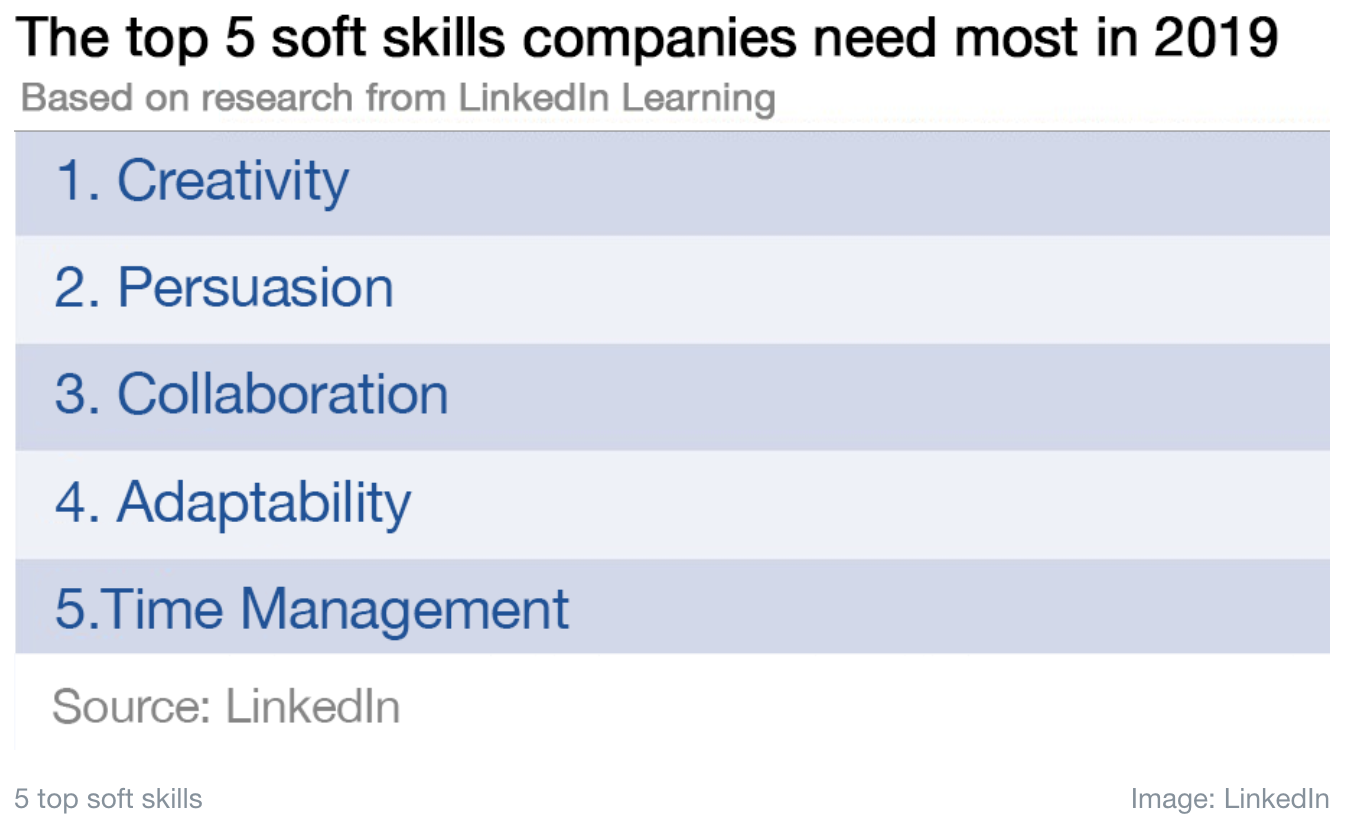
The report states that with the Fourth Industrial Revolution employers seek a greater mix of skills. LinkedIn said the top soft skills are creativity, persuasion, collaboration, adaptability and time management.
“The Forum looked at how the desirability of those attributes is likely to evolve over time, with active learning, creativity and social influence climbing up the list,” according to the article.
In my 35 years building brands, and my last decade focused on coaching and teaching business storytelling to some reluctant executives, I feel smugly vindicated. Because I’ve witnessed how when you strengthen your communications capabilities through storytelling, you inherently build on each one of these sought-after soft skills. Below are just a few examples.
How storytelling is your best creative hack
Do you ever fear being considered a creative hack? Creative tactical business skills can be taught, like graphic design, writing, video editing and audio production, maybe even creative problem-solving.
But can creativity itself be taught? I don’t think it can. I believe creativity to be intuitive to who we are as a species.
Creativity that truly moves people comes from within. You have to be courageous to make yourself open and vulnerable to be your best creative self, and that is difficult in business where logic is often (mistakenly) preferred over emotion.
Storytelling is the best creativity hack in a corporate environment. Because true stories well told enroll your people in a common mission, align them with a focused vision and inspire them to take action.
For instance, do you think the most creative ad campaign developed by the finest ad agency in the world with the most brilliant artistic minds could rally America to invest $25 billion into the Apollo space program to put a man on the moon by 1969?
Nope! It took a made-up science fiction story from a leader, President John F. Kennedy, who knew how to harness the gravitational pull of story on our collective imaginations to enroll the country into this monumental quest.
“I believe that this nation should commit itself to achieving the goal, before this decade is out, of landing a man on the moon and returning him safely to the Earth. No single space project in this period will be more impressive to mankind, or more important for the long-range exploration of space, and none will be so difficult or expensive to accomplish.
But in a very real sense, it will not be one man going to the moon–if we make this judgment affirmatively, it will be an entire nation. For all of us must work to put him there.”
To make sure America did not lose its will to land a man on the moon, JFK advanced his story in his famous “Moon Speech” at Rice University in Houston, TX, on September 12, 1962.
“We choose to go to the moon in this decade and do the other things, not because they are easy, but because they are hard…
…we shall send to the moon, 240,000 miles away from the control station in Houston, a giant rocket more than 300 feet tall, the length of this football field, made of new metal alloys, some of which have not yet been invented, capable of standing heat and stresses several times more than have ever been experienced, fitted together with a precision better than the finest watch, carrying all the equipment needed for propulsion, guidance, control, communications, food and survival, on an untried mission, to an unknown celestial body, and then return it safely to earth, re-entering the atmosphere at speeds of over 25,000 miles per hour, causing heat about half that of the temperature of the sun–almost as hot as it is here today–and do all this, and do it right, and do it first before this decade is out–then we must be bold.=
And, therefore, as we set sail we ask God’s blessing on the most hazardous and dangerous and greatest adventure on which man has ever embarked.”
All leaders know how to use the creative power of narrative to transport their people into exciting new worlds. Don’t worry if you’re not the most gifted creative person in the world. JFK certainly wasn’t. Just use your stories to help them envision an imagined reality they can live into and prosper from.
Become more persuasive as a storyteller
Stories are key in business to build rapport and persuade people to see your side of things.
I was greeted by 100+ skeptical software developers at the MuraCon conference in Sacramento, California in March 2018. I kicked off my Business of Story keynote by asking the audience:
“Who thinks storytelling is bullshit?” I was not surprised when half the room raised their hands.
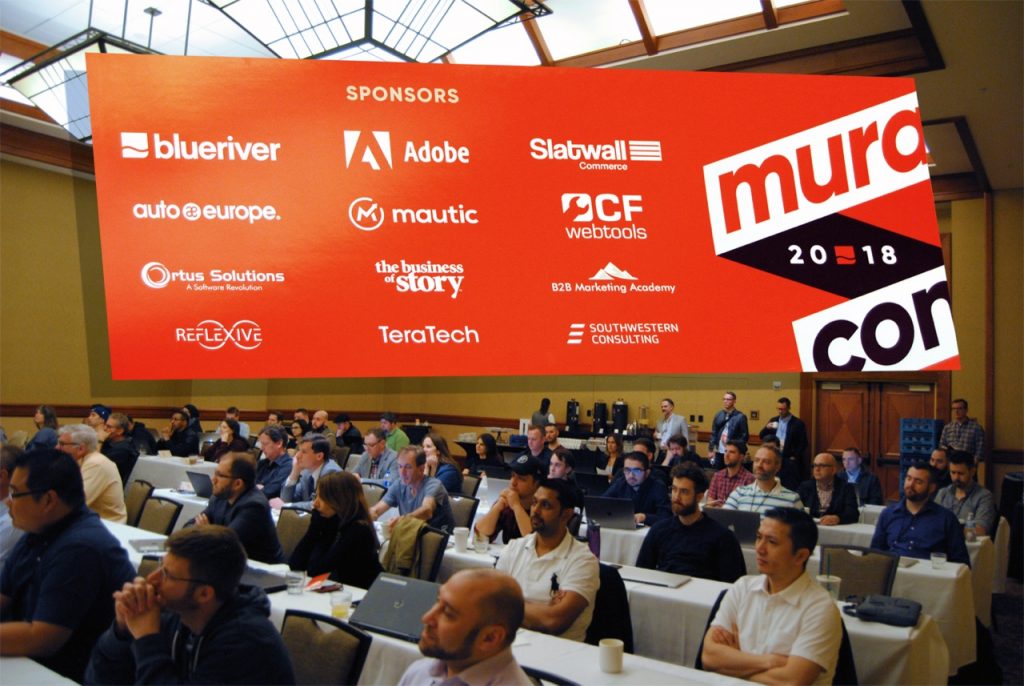
But instead of ducking their skepticism, I acknowledged it. I said that I didn’t understand their life of coding. Yet, I felt like our two worlds were not so dissimilar.
I proposed that great developers seek to design and write the cleanest, purest code to create the best user experience. I mentioned that storytellers do the same thing. We craft and tell clear and compelling stories to create optimal user experiences between the teller and her audience. In fact, I said,
“Stories are simply the software that drive the hardware of our minds that are constantly whirring trying to make meaning out of the madness of being human.”
They laughed, nodded in agreement and gave me permission to teach them how to write better code for storytelling over the next 90 minutes.
Storytelling is one of the most powerful tools to overcome entrenched views called anti-stories. And if you make your counter story fun and entertaining, you will have just mastered a Jujitsu move in persuasion like no other.
I also wrote this article for the audience: How Storytelling “Soft Skills” can Create Better User Experiences in Technical Careers
Storytelling is the Velcro™ of collaboration
Intentional storytelling connects you with your audiences on a deeper, more primal level.
In early June 2018, Jennifer Russo called to tell me she would soon be unemployed. As a single mom with two young sons, this was a challenge. She had left her 15-year career as an international marketing communications executive for Rio Tinto mining to spend more time with her kids.
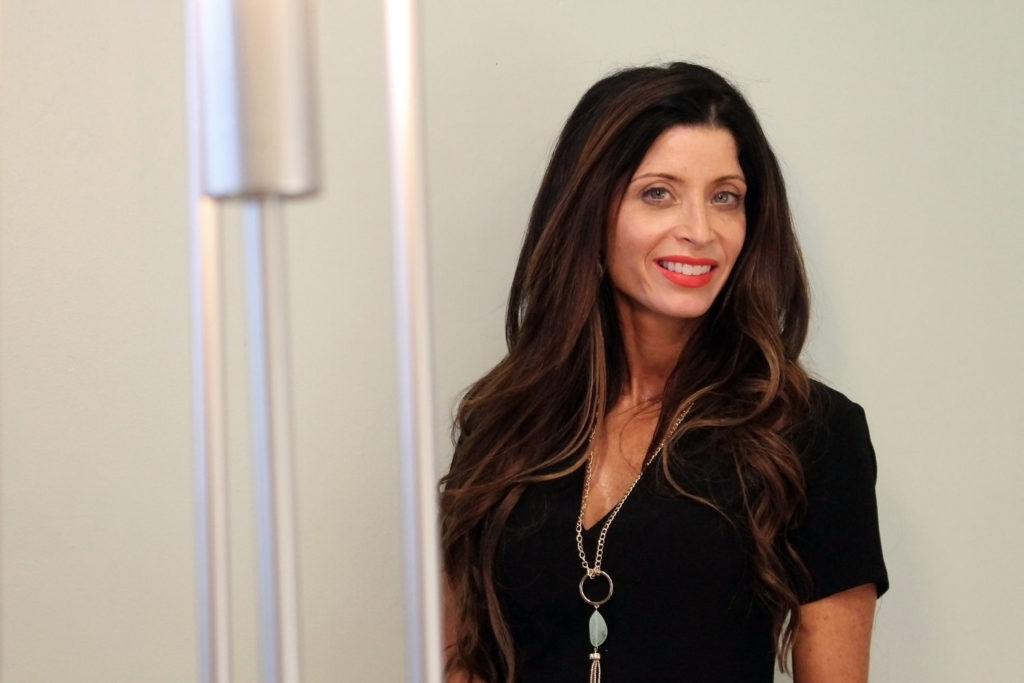 Jennifer still needed a full-time job, but with less travel. When I asked her what kind of position she was looking for, she mentioned a high-level job where she could work with a multi-national company and use her communications skills right here in Phoenix, Arizona.
Jennifer still needed a full-time job, but with less travel. When I asked her what kind of position she was looking for, she mentioned a high-level job where she could work with a multi-national company and use her communications skills right here in Phoenix, Arizona.
“And maybe something in diversity and inclusion,” she said.
“You have an amazing background,” I mentioned, “but I think your job search criteria is too vague.” I encouraged her to clarify her personal brand story to amplify her impact and simplify her life. “Because,” I coached, “you don’t want to spend the next 15 years, the prime of your business life, in another job that doesn’t play to your curiosity and passion.”
As her ad agency-of-record for five years, I had experienced the energy and positive attitude Jennifer brought to all of her work relationships. She was too close to her own attributes to appreciate them, so I suggested that she excavate her personal brand story by filling out the DIY Brand Story Strategy Workbook.
Once she was finished, Jennifer sent it to me so I could help her refine her story. Clarifying her story was important to define the position she was looking for, which would attract the right opportunities and save her time from chasing the wrong gigs.
So I suggested that her unique personal brand position in the market of corporate communications professionals is as the Kinetic Communicator with an energy that attracts professionals of diverse thinking and backgrounds to help people and organizations outperform in the market. Jennifer mines the untapped capital in a company’s collective diversity.
Jennifer’s personal brand story now connects her to her authentic offering as the “Kinetic Communicator.” Two months later, after sharing her narrative of how she specializes in building collaborative teams to grow organizations by igniting their diversity and inclusion initiatives, Jennifer had a pick between several job offers. She is now the Director of Corporate Communications at Banner Health.
Listen to Jennifer’s story and read how she uses storytelling to collaborate on her site, JenniferRusso.me.
Storytelling helps you become more adaptable
Don’t you wish you had a crystal ball that reveals what’s ahead for you in life? Many executives approach the future with logic trying to rationalize coming events. But we live in a wildly chaotic and irrational world.
I’ve found the most adaptable executives tend to have solid narrative intuition. They anticipate the road ahead by viewing coming events in story form: as a chapter in a larger narrative. They use their experiences to inform the next chapter of their journey adapting along the way as they encounter roadblocks and detours.
In 1973, Luis Miguel traveled from his home in Mexico City to the Ozark Mountains in Missouri for summer camp. It was his first time in the United States.
“I immediately fell in love with the modernity, the openness and the dynamism of the American culture. I wanted to emigrate and be part of the American dream,” he said.
But he knew something was wrong.
There was a boy at camp who referred to him by a name he had never heard before. When Luis returned home, he looked up the meaning of “Wetback.”
He was astonished to learn about this derogatory term for Mexicans, and was puzzled by why this young man, a complete stranger who knew nothing about him, would call him such a name. This would become an important moment in shaping Luis and the impact he would make on the world.
He told me, although he didn’t know it at the time, that this incident is one of many pivotal scenes in his life that have given him and his brand, which is an international translations firm, his core purpose: Avantpage exists to help all immigrants realize their American Dream.
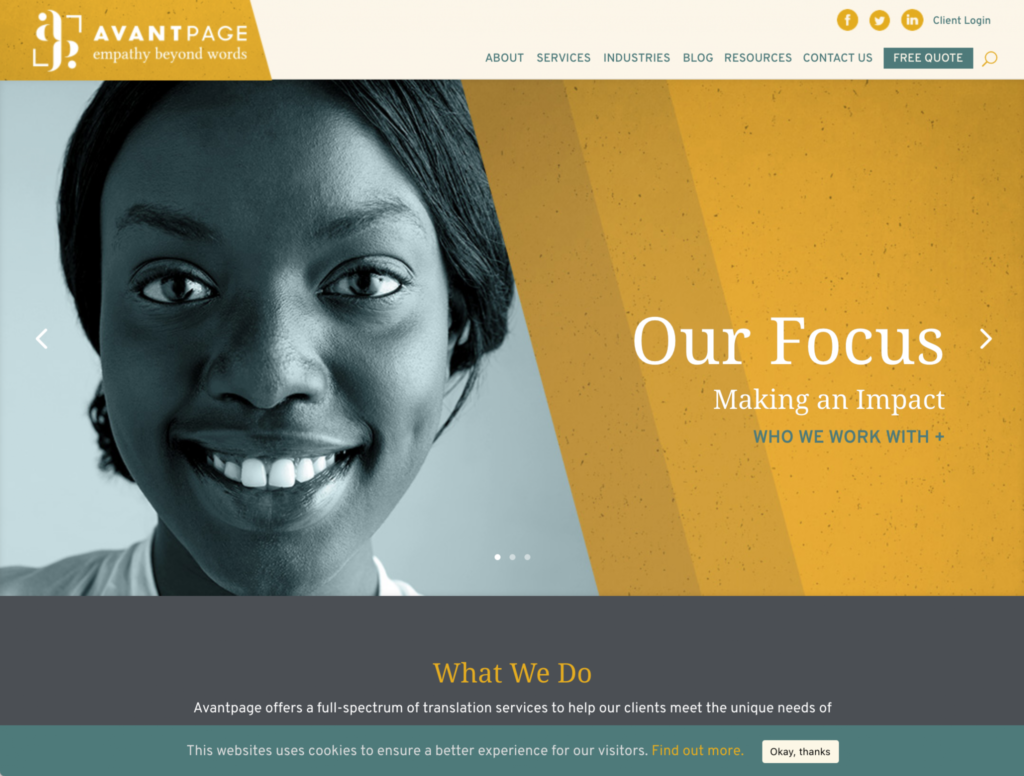
This story is an excerpt from the Avantpage rebrand case study and exemplifies how storytelling leads to understanding, empathy, finding common ground and adapting to new ways of thinking and being.
How being an intentional storyteller enhances your time management skills
Your boss just left your office and guess what, you have a new assignment. You now own the quarterly productivity presentation to be given next Thursday.
Your head swims with presentation ideas as you drown in another time commitment. Where do you start? What’s your theme? How long will this take? How long must it be?
Instead of floundering for ideas (the human default mode) you take a deep breath and recall the three proven storytelling frameworks you just learned through the Business of Story.
You take a pen and pad (you’re old school like me) and scribble down your theme by using the And, But & Therefore (ABT) framework. This is the narrative template detailed in Dr. Randy Olson’s book, Houston, We Have a Narrative: Why Science Needs Story, you may have learned in my masterclass.
You quickly focus your theme:
Sales at Soap Suds: the Intoxicating Craft Brewed Body Wash, are at an all-time high and our production team has grown by ten percent to fulfill demand as efficiently as possible.
But Soap Suds’ internal systems aren’t keeping up as calls overload our customer service lines and batch mixers can’t accurately deliver the correct consistency of product.
Therefore, I recommend…
Voila! Your focused theme and narrative context for your presentation has been created in under five minutes. It used to take you hours (okay, days) to dial this in.
Then you consider three example stories to use to support each of the points you’ve made in your ABT. This is easier than you thought it would be because these stories are happening all around you. To keep your anecdotes short and sweet, you craft them using the five primal elements to story as outlined in Shawn Callahan’s book, Putting Stories to Work:
- Timestamp: When did this happen?
- Location stamp: Where did this happen?
- Character: Who is at the center of this story that your audience can relate to?
- Action/surprise: What happened and what was its surprising outcome?
- Aha moment: What did you learn from this story and how does it support your point and provide insight on what to do next?
You realize that your presentation is simply a story of stories. Thank God! Because you’re tired of dying by a data-ladened, chart-choked, bullet-riddled Powerpoint.
With your ABT and example anecdotes in hand, you pull out your 10-step Story Cycle System™ to outline your presentation. The Story Cycle™ provides you the narrative road map you need to take your audience for a ride. It’s perfect because you know a leader like you tells stories to transport their audience to someplace better than where they are now.
Although your presentation isn’t yet complete, the exhausting, time-consuming work of developing your theme and content outline is already done. Your shoulders settle. Your breathing is surprisingly calm. Time flew by as you found your flow.
“How’d it come together so quickly?” you wonder.
But then you remember how you’ve been practicing your ABTs in your emails. This has been building your narrative intuition.
“Come to think of it, I bet I’ve cut my email writing time in half,” you notice.
Even your colleagues have mentioned how much they appreciate your more concise and clear emails. And you recognize, like that rash slowly revealing itself on your line workers, that being an intentional storyteller who uses proven narrative frameworks is changing the complexion of your leadership, buying you more time in the office and making time for those around you even more efficient.
That’s rather important, you conclude, considering Soap Suds is foaming over in business. You’re even finding more spare time to write puns.
So when you consider the five most in-demand soft skills in business today, remember that leaders clarify their stories to amplify their impact and simplify their lives.
Story on, my friend.



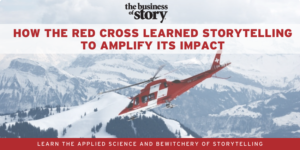

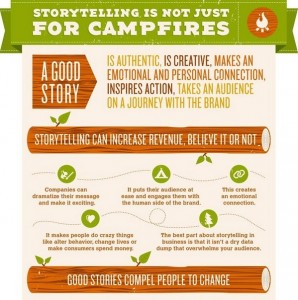






at 7:57 am
[…] Victories at the Business of Story are measured by ROI of business storytelling, revenue growth, new client acquisition, team alignment with diversity and inclusion, personal skill growth. […]